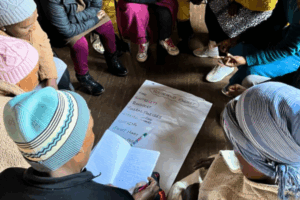Intersectional Women’s March against GBV Pretoria 2018
What is gender-based violence?
There are different definitions of gender-based violence (GBV). GBV can broadly be defined as ‘…the general term used to capture violence that occurs as a result of the normative role expectations associated with each gender, along with the unequal power relationships between genders, within the context of a specific society.’ The expectations associated with each gender vary from society to society, but patriarchy is a common factor. Male leadership is seen as the norm and men hold most of the power. Patriarchy is a social and political system that treats men as superior to women. In a patriarchal society, women can’t fully protect their bodies from violence, meet their basic needs and participate in society. The root cause of gender-based violence globally is inequitable gender norms.
What are the forms of gender-based violence?
There are many forms of GBV. GBV can be physical, sexual, emotional, financial or structural. Violence can be perpetrated by intimate partners, acquaintances, strangers and institutions. The forms of GBV include violence against women and girls, violence against LGBTI people, intimate partner violence, domestic violence, sexual violence and indirect (structural) violence.
Structural violence is described as violence that is built into structures, resulting in unequal power relations and unequal opportunities affecting certain groups, classes, genders or nationalities of people. Political and social norms change can address structural violence.
Intimate partner violence is the most common form of GBV. It includes physical, sexual, and emotional abuse and controlling behaviours by a current or former intimate partner or spouse. Intimate partner violence can happen in heterosexual or same-sex couples.
We know that GBV levels are high but we don’t always have accurate statistics due to many factors, for example, under-reporting of incidents. GBV is very high in South Africa compared to other countries. On average, one in five South African women older than 18 has experienced physical violence. Thousands of women and children are psychologically harmed by GBV and suffer long-term trauma and harm to their lives. The main drivers as shown by the available statistics are intimate partner violence and non-partner sexual violence. Gender-based violence permeates all structures of society – political, economic and social -and is driven by entrenched patriarchy and complex and intersectional power inequalities found in race, gender, class and sexuality.
How can we end gender-based violence?
We’ve made some progress in addressing GBV. We are better at defining and understanding it. We are better at collecting data and evidence to identify and support effective interventions. We’ve seen relatively improved awareness and access to services. Despite the gains, gender-based violence is still a challenge. So, how can we effectively address the fundamental inequalities to end GBV? A good starting point is to recognise that women’s rights are human rights. South Africa has a strong legislative framework and is a signatory to several international treaties on GBV. Examples include the Domestic Violence Act (DVA), the Sexual Offences Act, and the Prevention and Combatting of Trafficking in Human Persons (2013) Act”. We urge South Africa’s government to ratify the ILO Convention 190, which addresses violence, discrimination and harassment in the world of work.
Six actions we can take to end GBV
The LRS response to GBV in the workplace and communities
Watch: Education unions take action to end school-related gender-based violence in Africa.







